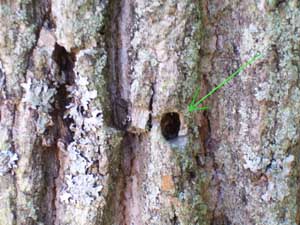Maumee Bay State Park Boardwalk Trail
Ohio Department of Natural Resources, Division of ParksMaumee Bay State Park
Trail Location
Oregon, Ohio (Lucas County)
Maumee Bay State Park is located at 1400 State Park Road, Oregon, Ohio 43618. Park at the Maumee Bay State Park Resort parking lot. The Nature Center is on the right if you are facing Lake Erie. The Boardwalk Trail starts at the Nature Center.
Trail Summary
Length: 2 miles
Duration: 2 hours
Surface: boardwalk
Type: Loop.
Difficulty: easy
Accessibility: Yes. There are ramps, and the boardwalk is wide enough to accomodate wheelchairs and strollers.
Trail Description
This delightful boardwalk takes you through a large coastal wetland complex faintly reminiscent of what the Great Black Swamp may have been like before it was drained and cleared for farmland in the 1800's. The trees in this wetland forest are a bit smaller, but the species mix is similar: Green Ash, Cottonwood, Silver Maple, Red Maple, Elm, Swamp White Oak.Bird life is abundant in our coastal Ohio wetlands. Here you may see the Wood Duck, Redheads, Ruddy Ducks, Pintails, as well as a number of woodpecker species, such as the hairywoodpecker. Great Blue Heron hunt in the shallow water for fish, while the yellow warbler, swamp sparrows, and other songbirds sing their praises to the great Lake Erie.
While the ecosystem of Maumee Bay is generally healthy, a dangerous visitor can be found here. More deadly perhaps than the non-native Phragmites that is overtaking the sunny open wetlands, the asian insect, Emerald Ash Borer (Agrilus Planipennis), has been known to be present in this area of Ohio since 2003. This insect attacks all species of our native ash trees, including the Green Ash that is common in the swamp forests of Maumee Bay State Park.

The exit wound of the Emerald Ash Borer, which leaves the bark of its ash tree host in the spring.
The little green menace is approximately one half inch long and maybe only one eighth of an inch wide when fully grown. The adults do not cause much damage to trees themselves. They simply eat a few leaves and reproduce. However, it is the larval stage of this bug that causes the real problem. Despite its small stature, these creepy critters can kill an otherwise healthy, vibant ash tree within three years of infestation. Emerald Ash borer larvae feed on the inner bark of ash trees, essentially stopping the tree from translocating nutrients and water between the roots and leaves. This starves the tree, which dies.
Because this bug is not native to North America, there are no known natural enemies to keep it's spread in check. However, you might nitice that in areas of infestation, there is a proliferation of woodpeckers. Lots of woodpecker marks on ash trees might be a good indication that the Emerald Ash Borer is around. Who knows, maybe enough woodpeckers will thrive on this new food source that they can knock the population of borers back to a less manacing level. Not likely, but stranger things have happened in nature.
Beyond looking for woodpeckers, while walking this boardwalk trail, see if you can see the small "d" shaped exit holes in the bark of ash trees. These small (eight of an inch or so) holes are created when the larval stage of the Emerald Ash Borer grows to adulthood and bore out of the bark in the spring-time.
Because of the ecological and economic destruction this pest can cause (Ash is a valuable wood used for making tool handles, baseball bats, and numerous other wooden products where tough wood is needed), there is a quarantine intended to stop or slow the spread of the bug. Please, do not transport firewood anywhere. Buy it locally when camping, and don't take it home with you. This is very important, because if the Emerald Ash Borer is found in an area, the government comes in and cuts down all ash trees in the area, at great cost to the natural resources of the area, not to mention the taxpayers and property owners. For in depth information about the Emerald Ash Borer Quarantine and eradication efforts, check out the Ohio Department of Agriculture's web site.
For maps of the known Emerald Ash Borer infestation sites, see The Ohio Department of Agriculture's maps of infestations.
Make sure to stop at the observation tower which overlooks a wide marsh on the shore of Lake Erie. The panoramic view of the lake and marsh is worth the walk. You will walk through a cattail marsh, with blue vervain, rose mallow, and a number of other beautiful flowers intermixed. If you are lucky, maybe a mature bald eagle will soar overhead.
